| Skip Navigation Links | |
| Exit Print View | |

|
Oracle Java CAPS FTP Binding Component Tutorial Java CAPS Documentation |
| Skip Navigation Links | |
| Exit Print View | |

|
Oracle Java CAPS FTP Binding Component Tutorial Java CAPS Documentation |
Understanding the FTP Binding Component
Software Needed for the Tutorial
FTP Binding Component Project in a Nutshell
Starting the GlassFish Application Server
To Start the GlassFish Application Server
Working With JBI Runtime Environment
FTP Binding Component Runtime Configuration Properties
Creating a BPEL Module Project : SendInventory
To Create a BPEL Module Project
Creating a WSDL Document : Using FTP
To Create a WSDL Document : ftpTransfer
To Modify ftp:message Properties
Poll Request Wizard Properties
FTP MessageActivePassive Element (<ftp:messageActivePassive>)
FTP Binding Component Extensibility Elements
FTP Operation Element (<ftp:operation>)
FTP Binding Element (<ftp:binding>)
FTP Transfer Element (<ftp:transfer>)
FTP Address Element (<ftp:address>)
FTP Message Element (<ftp:message>)
Creating a WSDL Document : Using FILE
To Create a WSDL Document : fileTrigger
To Add Web Services and Basic Activities
To Edit Web Service : Receive1
Creating a Composite Application
To Create a Composite Application
Deploying the Composite Application
To Deploy the Composite Application
Working With Various Binding Types
To Add a Complex and a Global Complex Type to the XML Schema
In this section, you add a BPEL process file named sendInventoryBP.bpel. This example also illustrates adding a partner link and activities to the BPEL process file.
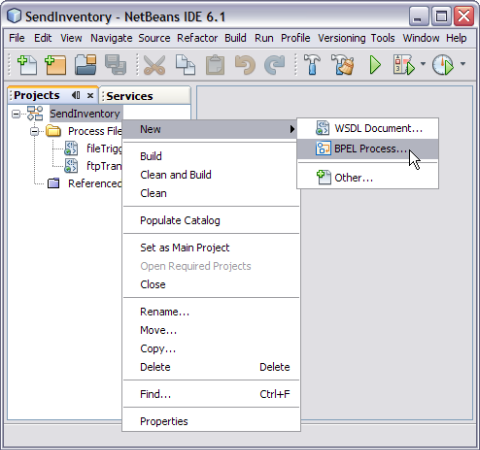
The New BPEL Process wizard appears.
Note -
In the Projects window, the IDE adds a sendInventory.bpel node under the Process Files node.
The sendInventory.bpel file appears in the BPEL Designer.
If the Properties window is not visible, click Window and then click Properties.
The Navigator window appears showing the BPEL Logical View of the BPEL Process document.
This is the Input WSDL (for example, fileTrigger.wsdl).

This is the Output WSDL.
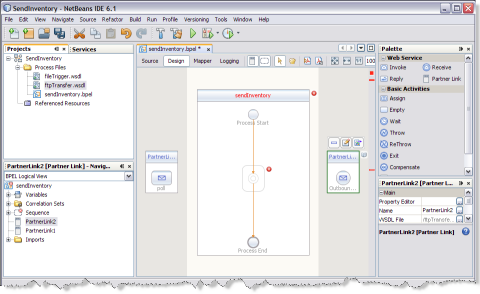
Drag and drop the following web services:
Receive
Invoke
Drag and drop the basic activities : Assign.
The IDE provides the visual clues to show an appropriate location to drop the selection.

This action places a Web Service : Receive1 in the Design view.
This action places a Assign activity called Assign1 in the Design view.
This action places a Assign activity called Invoke1 in the Design view.

Note - In the diagram, a red cross next to an element means that the element has not passed validation and the output contains errors. Edit each Sequence to pass validation.
The icon symbolizes the Web Services that can be edited.
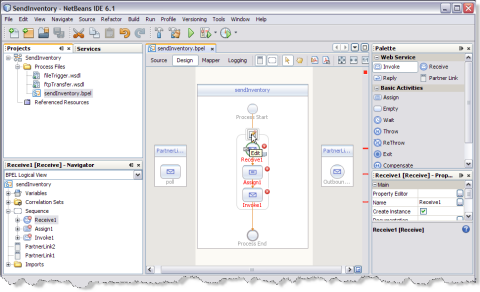
This opens the Receive1 [Receive] - Property Editor.
The IDE populates poll against the Operation field.

Click the Create button next to the Input Variable field.
The New Input Variable dialog box appears.
The default values assigned in the Name, Type, and Scope fields are populated for the variable.
The value in the Name field can be changed.
Click OK.
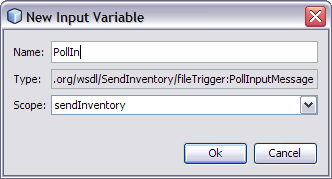
Input Variable — PollIn
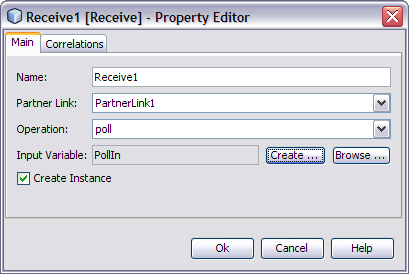
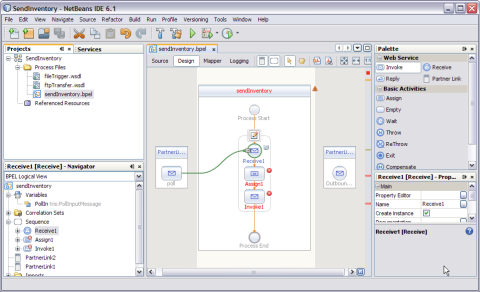
The Invoke1 [Invoke] - Property Editor appears.
The IDE populates OutboundOneWayMessagingOperation against the Operation field .
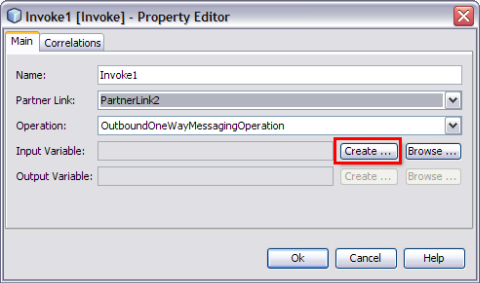
Click the Create button next to the Input Variable field.
The New Input Variable dialog box appears.
The default values assigned to the Name, Type and Scope fields are populated for the variable.
The value in the Name field can be changed.
Click OK.
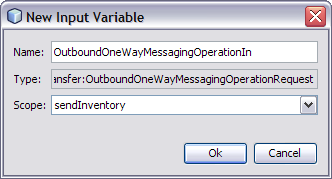
The Invoke1 [Invoke] — Property Editor is displayed as shown.

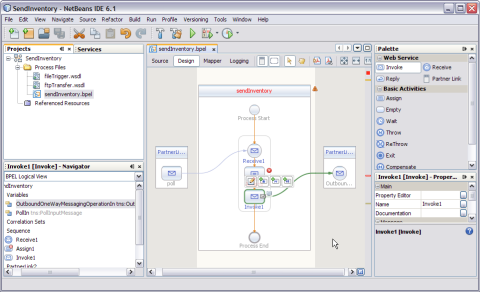
This displays the BPEL Mapper window.
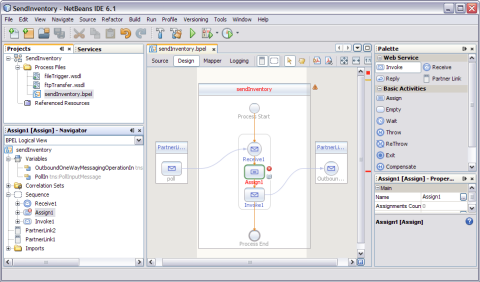
A part1 node appears under the PollIn node.
A part1 node appears under the OutboundOneWayMessagingOperationIn node.
For example, PollIn — part1.
For example, OutboundOneWayMessagingOperationIn — part1.
part1 — part1
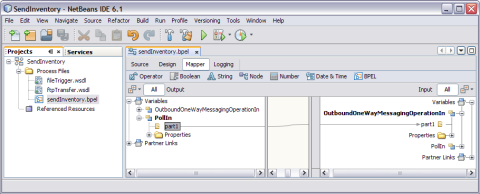
The final output is as shown in the illustration.
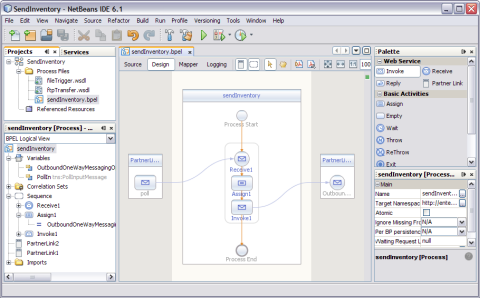
The following message appears after the build.
BUILD SUCCESSFUL (total time: 1 seconds).
